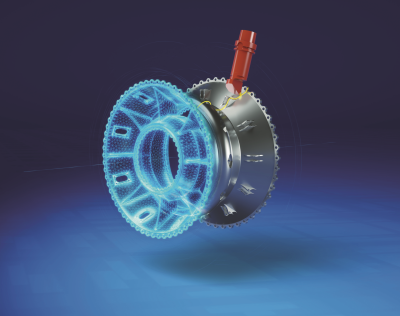
The hyperMILL 2025 CAD/CAM Software Suite from OPEN MIND Technologies features highly productive programming and machining strategies that the company says enable accurate, efficient 2.5D, 3D, precision 5-axis, and mill/turn machining.
The 5-axis automatic tool orientation mode in hyperMILL 2025 ensures optimized machining, enabling efficient and reliable tool paths on the most complex components, the company says. The 5-axis automatic tool orientation mode algorithm uses a pre-analysis of the entire tool path to calculate machining sequences of simultaneous and indexed tool movements, reducing the number of inputs required for 5-axis machining and saving time when programming challenging parts.
A 5-axis hole deburring strategy excels at deburring sharp edges on holes and intersecting holes, the company says.
The software suite will be used in live demonstrations this September at EMO 2025, Hanover, Germany, which will include key components of networked production environments and live aerospace turn/mill machining operations. Integration with the Hummingbird (MES) Software Suite will also be highlighted.
At the show, a Mazak Integrex i-100H S Turn/ Mill Center will be under power in the OPEN MIND booth, demonstrating how to manufacture an aerospace component with 5-axis technologies and hyperMILL TURNING Solutions. The hyperMILL offers a wide range of functions and strategies for mill-turning, turn-milling, and turning. EMO offers attendees the opportunity to see and experience the latest hyperMILL strategies.
Four workstations will be used to demonstrate hyperMILL functionalities, and four key components of the Hummingbird Manufacturing Execution System, including synchronized planning and control, machine data acquisition, tool management, and CAM/CNC integration, will be shown as an important step towards digitalization.
For more information about the latest release of hyperMILL 2025, click here.
Contact Details
Related Glossary Terms
- milling machine ( mill)
milling machine ( mill)
Runs endmills and arbor-mounted milling cutters. Features include a head with a spindle that drives the cutters; a column, knee and table that provide motion in the three Cartesian axes; and a base that supports the components and houses the cutting-fluid pump and reservoir. The work is mounted on the table and fed into the rotating cutter or endmill to accomplish the milling steps; vertical milling machines also feed endmills into the work by means of a spindle-mounted quill. Models range from small manual machines to big bed-type and duplex mills. All take one of three basic forms: vertical, horizontal or convertible horizontal/vertical. Vertical machines may be knee-type (the table is mounted on a knee that can be elevated) or bed-type (the table is securely supported and only moves horizontally). In general, horizontal machines are bigger and more powerful, while vertical machines are lighter but more versatile and easier to set up and operate.
- turning
turning
Workpiece is held in a chuck, mounted on a face plate or secured between centers and rotated while a cutting tool, normally a single-point tool, is fed into it along its periphery or across its end or face. Takes the form of straight turning (cutting along the periphery of the workpiece); taper turning (creating a taper); step turning (turning different-size diameters on the same work); chamfering (beveling an edge or shoulder); facing (cutting on an end); turning threads (usually external but can be internal); roughing (high-volume metal removal); and finishing (final light cuts). Performed on lathes, turning centers, chucking machines, automatic screw machines and similar machines.

